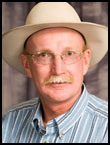
Ron Torell
Back to Basics
Cash for gummers
We have all followed the government-funded "Cash for Clunkers" program designed to encourage U.S. consumers to trade in their low-performance, gas-guzzler vehicles for more fuel-efficient new models. The Cash for Clunkers program stimulated the economy, put autoworkers back to work and saved fuel — all at taxpayers' expense
I propose we implement a "Cash for Gummers" program. We could model the eligibility criteria to the already established requirements for Cash for Clunkers. Only poor-performing animals or cattle in the gummer stage of production would qualify. All qualifying animals would be required to be harvested, then replaced with a yearling or first-calf heifer with a stacked pedigree or package of expected progeny differences (EPDs). Funding could be accomplished in the same manner as the Cash for Clunkers, just add the cost to the national debt, leaving it up to our grandkids to pay for.
All kidding aside, it seems that each fall every ranch has a few gummers or pet cows that, in spite of poor performance or a history of producing outlier calves, avoid the terminal trip to McDonald's. It is irrelevant why you give these cows a free pass, be it sentimental value, color pattern, or an experience you had with the pet when she was a calf. Each animal on your ranch should be viewed as an economic unit. Sentimental reasons cost you money that most producers can ill afford in the current economic situation.
The premise behind the economic unit is, "It takes the same amount of annual inputs to feed a good one as it does a marginal or poor-producing cow." University of Nevada Cooperative Extension enterprise budgets (UNCE Fact Sheet 07-08) shows average annual cow-carrying costs for northeastern Nevada, including fixed as well as variable costs, to be approximately $500 per head per year. Cattle-Fax data support this figure and list similar but varying input costs for other regions of the United States.
Generally, the worst offenders of the pet cow syndrome are those ranches who can least afford it, the one-truckload operator who manages 200 mother cows. These operations can barely make a truckload of steers with no cutbacks. For northeastern Nevada, their load will vary in weight from 425 pounds (lb.) to 525 lb. The reason for this variation in weight is due to the age of the calf (strung out calving season) and the fact that first-calf heifers, old cows and mature cows in the prime of their production cycle are all contributing to the pool. The pet cows and gummers on these operations often produce outlier calves that are frequently cut back from the load due to weight, lack of muscling or color pattern.
Larger operations have the economy of size on their side relative to marketing. They can market one truckload of lightweight calves, multiple loads of medium weights and one load of heavies. Many of the larger operations can even put together a load of outliers. The smaller operator does not have this flexibility, thus the need to eliminate the cows producing outliers is paramount.
I have heard every excuse for keeping the pet cow:
"We have the grass."
"It only costs me $30 to put up my hay."
"The ranch always supported a milk cow or two."
"She is bred."
"She was a 4-H cow."
How much is she really costing you? Put a calculator to it. Factor in the reduction in your ability to market a uniform truckload of calves. Factor in the reduction in price you receive for the outlier calves that have to be hauled to the sale yard (remember to include fuel and other associated costs in getting one or two animals to the yard). Factor in the missed opportunity of the resources dedicated to the pet cow that could be dedicated to a good cow. Be honest with yourself and include the actual carrying costs, fixed and variable, not the fabricated costs you come up with to justify keeping that pet cow around.
Bottom line: If you must have a pet cow around, make sure she is a good producer with a name like Schlitz, Shag Nasty or Shovel Head, for these names imply a range cow that works for a living. Stay away from poor-producing cows with names like Flower and Daisy, for these cute names imply a sentimental free pass. If your ranch resources will only allow you to manage 200 momma cows, make them 200 good ones. First and foremost, remove the outliers. Sign up those poor-producing, breachy homebound suckers that are always in the wrong place all the time for the Cash for Gummers program.
My hopes are that I not only brought a chuckle to your day, but perhaps a bit of wisdom relative to your culling and replacement program. As always, if you would like to discuss this article or simply want to talk cows, do not hesitate to contact me at 775-738-1721.
[Click here to go to the top of the page.]




